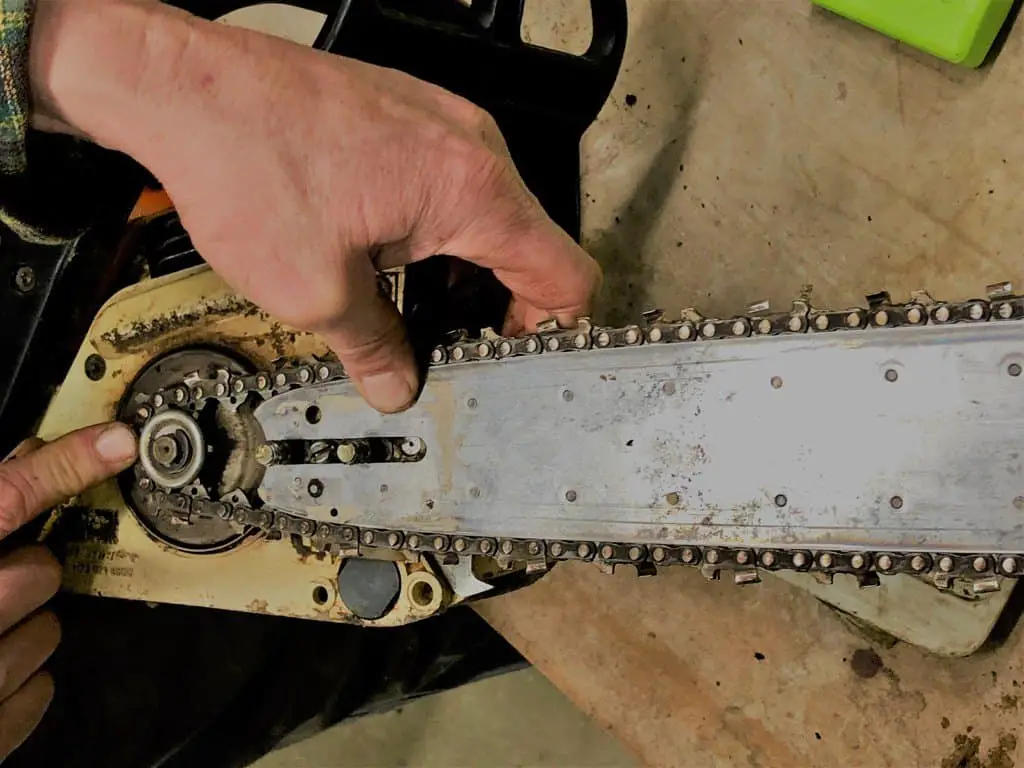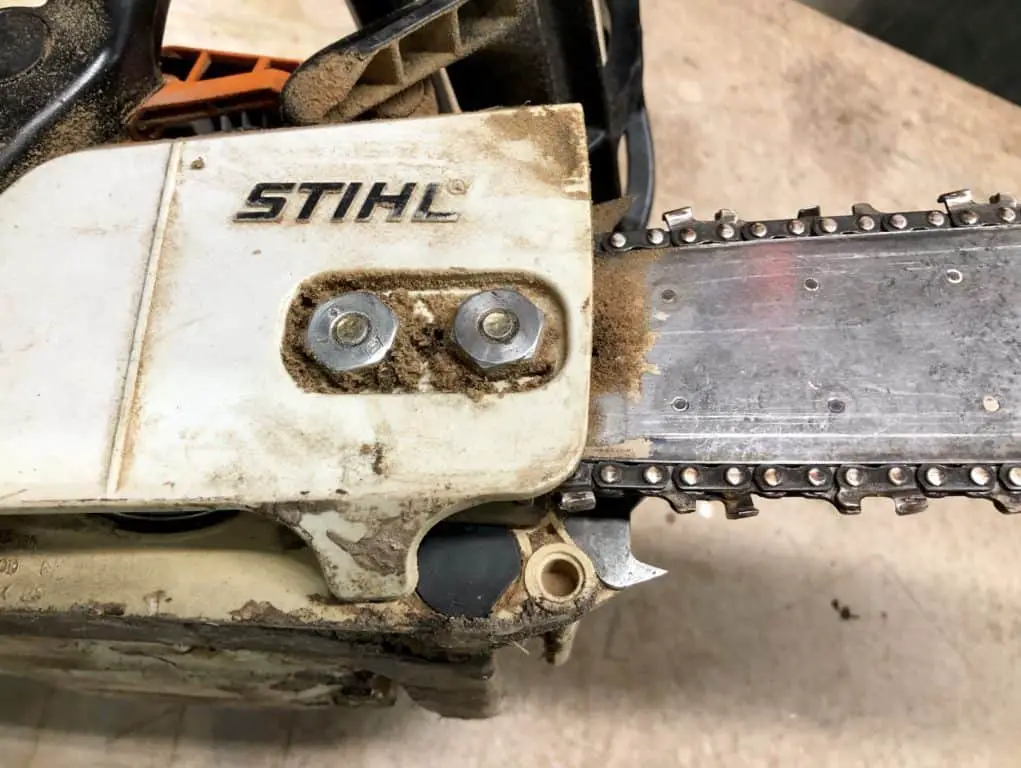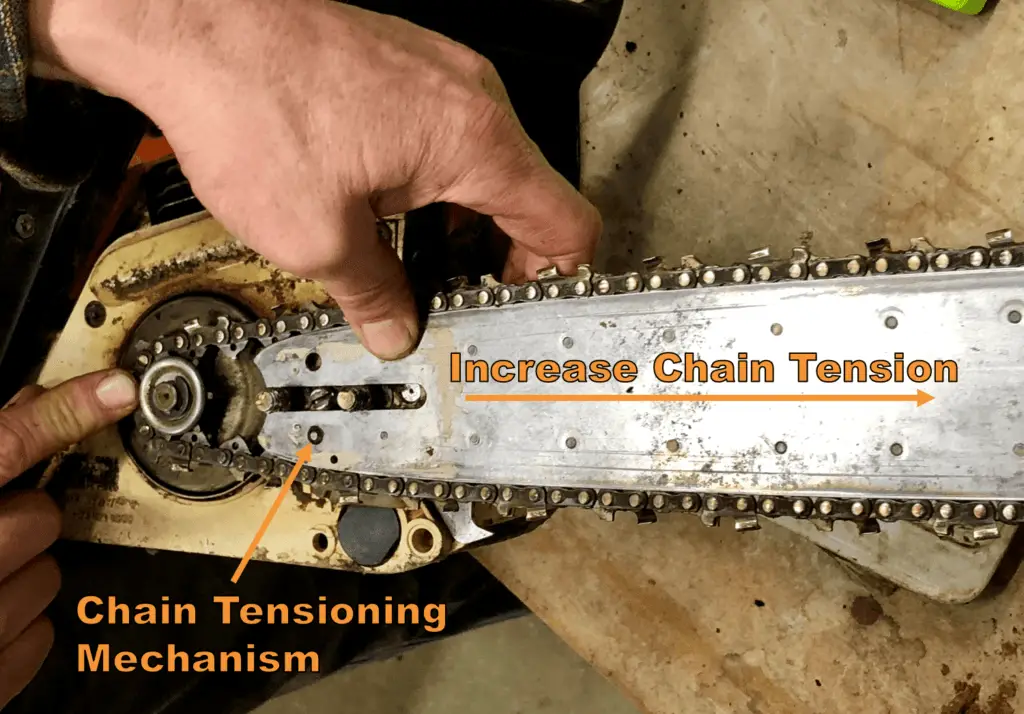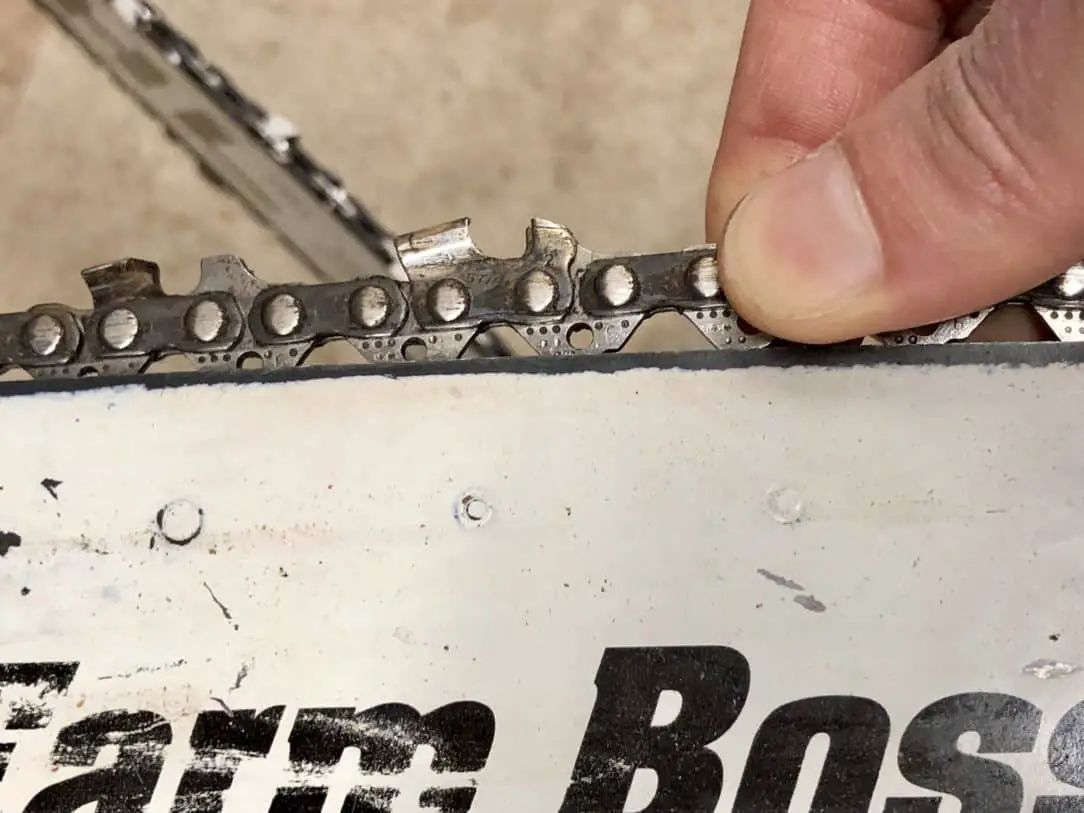
It’s pretty easy to find information about tightening a chainsaw chain. However, that doesn’t solve your problem if every time you tighten it, it seems to get loose again!
There could be 3 reasons your chainsaw chain keeps coming loose:
- The chain was not set properly
- A change in temperature
- There is a mechanical issue
That’s the quick overview of the reasons, but it doesn’t help you understand the background, or how you can fix the problem. But don’t worry, that’s what we’re going to cover in the rest of this post, starting with a bit more background on the 3 reasons above.
3 Reasons a Chainsaw Chain Keeps Getting Loose
Alright, as we mentioned, we’re talking about an ongoing issue. So if you’re just trying to figure out how to do a one-time tensioning of your chainsaw chain, check out this post instead.
you might be thinking of trying to shorten your chain if you think your chain is too large. Check out this article before you decide.
If it seems like your chainsaw chain keeps coming loose, and you have to tighten it more than seems normal, then this post is for you. We’re going to start by covering each of the 3 reasons mentioned above in more detail.
1. The Chain was Not Set Properly
Alright, let’s start with how the chainsaw chain is set.
What do I mean by “set”? When you tension your chainsaw chain, you finish by “setting” that tension so that it will not change as you operate the chainsaw.
Some chainsaws have an automatic tensioning handle, but for most models, one or two bolts are the standard. Basically, these bolts “lock” the position of your chainsaw bar in relation to the internal sprocket, which keeps the chain tension consistent (more on this later).
See bolts in the photo below:

If the bolts are too loose, then the position of the chainsaw bar can shift, and that will change the tension of your chain. For a quick tutorial on how to tighten these bolts correctly, watch this short video:
2. A Change in Temperature
This one comes down to physics. When metal gets warmer, it expands. When you’re using your chainsaw, as the chain heats up, it will literally get larger. This is probably the most common reason that a chainsaw will start tight, and then get loose.
This is particularly common when you store your chainsaw in cool temperatures. Then, even if you do a perfect job tightening it, you’ll probably have to tighten it again after running the chainsaw awhile.
This can be especially troublesome in very hot or very cold climates, where the temperature will affect your chain tension more significantly. But in most cases, temperature changes will be more noticeable going between storage and use.
3. There is a mechanical issue
The third reason your chainsaw chain might get loose (repeatedly), is an actual mechanical problem with your chainsaw. To understand this point, it’s helpful to better understand what is actually happening inside a chainsaw when you tighten it.
The tension of a chainsaw is determined by the distance between the sprocket and the chainsaw bar. In the image below, you can see the internal hardware of a chainsaw where the sprocket, chain and bar all come together.
All that’s really happening when you tighten your chainsaw chain, is that the chain tensioning mechanism is pulling the bar a little farther away from the sprocket.

If there is damage, or a malfunction with any of this internal hardware, it could cause your chainsaw to come loose even if you’ve done everything else right.
For this type of issue, you’ll probably want to take your chainsaw into a local saw shop to have a professional take a look. You can do a lot of chainsaw maintenance on your own, but for a mechanical problem, it’s probably better to pay a few bucks and have it done for you.
In the next section, we’re going to talk about a problem that is actually MORE common than having a loose chain.
What if Your Chainsaw Chain is Too Tight?
Most chainsaw users are more worried about their chain being too loose, rather than too tight. And to be fair, I understand the logic. It’s much more frightening to think your chainsaw might fly off (from being too loose) than it is to think about your chainsaw chain being excessively tight.
However, it’s actually a more common problem for people to run their chains too tight vs. too loose. Especially if you are relatively inexperienced with chainsaws, it’s easy to skew on the side of conservative, which often results in an over-tightened chain.
In this section, we’re going to give you a quick tutorial on how you can test the tension of your chain, to make sure it’s in the “goldilocks zone” (e.g. not too tight, and not too loose, but just right).
How to Use the Pull Test, to Test Chain Tension
You can do the pull test after you’ve finished tightening your chain, to make sure it’s correct. All you have to do, is gently pull your chain away from the chainsaw bar.
Pull the chain as far as you can comfortably pull with your fingers without losing your grip (be careful not to cut yourself!). If the chain has the perfect amount of tension, then the chain will partially lift away from the bar, but the drive links will NOT come completely clear of the bar.
See photo below, which shows proper chain tension:

If instead of this, you can’t get the chain to lift from the bar at all, then your chain is definitely too tight. On the other hand, if the drive links come completely clear of the chainsaw bar, then it is too loose.
If you want more details on how to test your chain tightness, you can check out this blog post, which also provides an alternative method of testing called the “snap test”.
At the end of the day, chainsaws are simple machines. By understanding more about how they work, you can use chainsaws more effectively, more safely, and you can save yourself money along the way.
I hope you’ve found this post helpful, and if you did, please go ahead and share it with a friend. If it helped you, then it can probably help them as well. That’s all from me.
Now go do something awesome!
